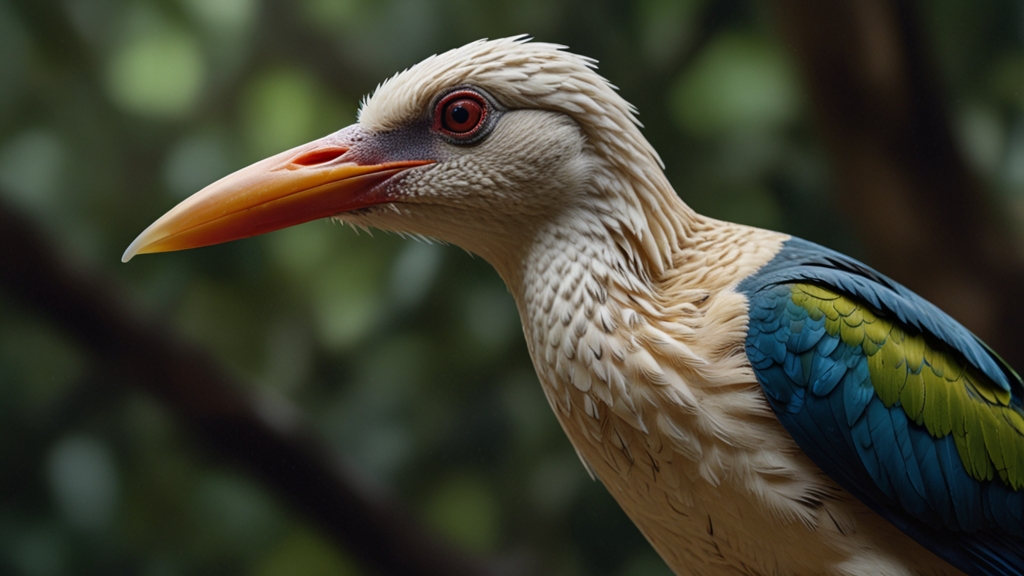Nature's Last Hope: Fighting for Endangered Species Survival
The tug-of-war between progress and preservation has never been as critical and visible as it is today. With climate change accelerating and habitats shrinking, the battle for the survival of endangered species stands as an urgent crusade. These species, on the brink of extinction, serve as vital indicators of the planet's overall health. Without immediate and effective action, we risk losing not only irreplaceable biodiversity but also the intricate ecological balance that sustains life on Earth.
Understanding the Crisis
Endangered species are those at a significant risk of extinction due to their dwindling population sizes and loss of habitats. Factors contributing to their plight include illegal poaching, deforestation, climate change, and pollution. According to the International Union for Conservation of Nature (IUCN), over 40,000 species are currently threatened with extinction, encompassing mammals, birds, reptiles, amphibians, and plants. The rate at which these species are vanishing is alarming—up to a thousand times higher than the natural extinction rate.
"We are the first generation to know we’re destroying the planet and the last one that can do anything about it.” — Tanya Steele, CEO of WWF UK
Conservation Efforts and Success Stories
Despite the grim statistics, numerous conservation efforts have yielded positive results, demonstrating that it is possible to reverse the trend. One such success story is the resurgence of the Giant Panda. Once on the brink of extinction, focused conservation efforts, such as anti-poaching patrols and reforestation projects in China, have resulted in the Giant Panda being downgraded from "endangered" to "vulnerable" on the IUCN Red List.
Another inspiring example is the recovery of the Bald Eagle population in the United States. Through the combined efforts of legal protection under the Endangered Species Act, habitat conservation, and banning harmful pesticides like DDT, Bald Eagles have made a remarkable comeback, showing a significant increase in numbers over the last few decades.
The Role of Technology in Conservation
Modern technology has become an invaluable tool in wildlife conservation. Advances in satellite imagery, Geographic Information Systems (GIS), and drone technology have enabled more effective monitoring of vulnerable species and their habitats. For example, heat-sensing drones are used to track poachers in Africa, significantly enhancing anti-poaching measures and allowing for rapid response to illegal activities.
"The future of wildlife is in our hands, and technology provides us with the tools to protect it like never before." — Jomo Tariku, Wildlife Conservationist
Community Engagement and Education
Efforts to save endangered species must also involve local communities living in proximity to these animals. Engaging and educating these communities on the importance of conservation can foster a collaborative spirit and generate local support for conservation initiatives. Projects that provide alternative livelihoods to communities dependent on activities detrimental to wildlife, such as poaching or logging, have shown considerable success. Ecotourism, for instance, offers a sustainable economic incentive to preserve natural habitats and protect wildlife.
Educational programs play a critical role in conservation efforts. By raising awareness about the plight of endangered species, these programs empower individuals to make informed choices that contribute to the preservation of biodiversity. Schools, media campaigns, and interactive digital platforms can all serve as conduits for spreading knowledge and fostering a culture of environmental stewardship.
Policy and Advocacy
Government policies and international cooperation are crucial in the fight to save endangered species. Strong legislation, accompanied by robust enforcement, can significantly curb illegal activities that threaten wildlife. International treaties, such as the Convention on International Trade in Endangered Species (CITES), play an essential role in regulating and monitoring trade in endangered species to ensure their survival.
Advocacy groups and non-governmental organizations (NGOs) are tireless champions of endangered species, lobbying for policy changes, funding conservation projects, and raising public awareness. Their work amplifies the message that conserving endangered species is not just an environmental issue but a moral imperative and a necessary step in ensuring a sustainable future for all living beings.
Conclusion
While the crisis facing endangered species is daunting, the concerted efforts of governments, NGOs, local communities, and individuals offer a beacon of hope. Through targeted conservation efforts, technological innovation, community engagement, education, and strong policy advocacy, it is possible to turn the tide and secure a future where endangered species thrive. Our actions today will determine the fate of countless species and, ultimately, the health of our planet. Nature's last hope lies in our collective willingness to stand up and fight for the survival of endangered species.








